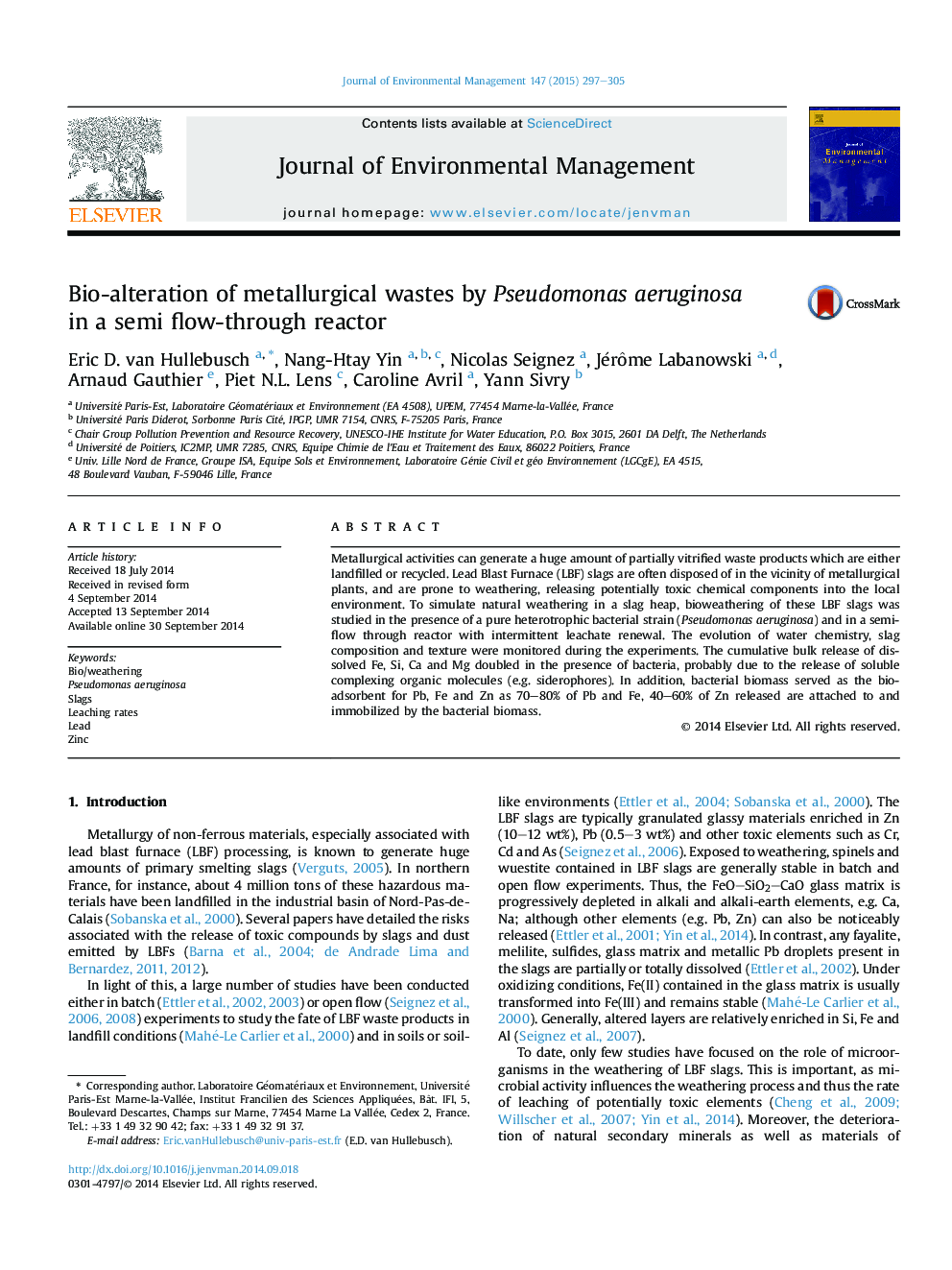| Article ID | Journal | Published Year | Pages | File Type |
|---|---|---|---|---|
| 1055672 | Journal of Environmental Management | 2015 | 9 Pages |
•Experiments were performed to study the bio-alteration of lead blast furnace slags.•Culture medium composition strongly control major and trace elements solubility.•Pseudomonas aeruginosa enhances toxic element (i.e. Pb, Zn) leaching.•Sorption onto bacterial biomass represents a main extraction mechanism.
Metallurgical activities can generate a huge amount of partially vitrified waste products which are either landfilled or recycled. Lead Blast Furnace (LBF) slags are often disposed of in the vicinity of metallurgical plants, and are prone to weathering, releasing potentially toxic chemical components into the local environment. To simulate natural weathering in a slag heap, bioweathering of these LBF slags was studied in the presence of a pure heterotrophic bacterial strain (Pseudomonas aeruginosa) and in a semi-flow through reactor with intermittent leachate renewal. The evolution of water chemistry, slag composition and texture were monitored during the experiments. The cumulative bulk release of dissolved Fe, Si, Ca and Mg doubled in the presence of bacteria, probably due to the release of soluble complexing organic molecules (e.g. siderophores). In addition, bacterial biomass served as the bioadsorbent for Pb, Fe and Zn as 70–80% of Pb and Fe, 40–60% of Zn released are attached to and immobilized by the bacterial biomass.
